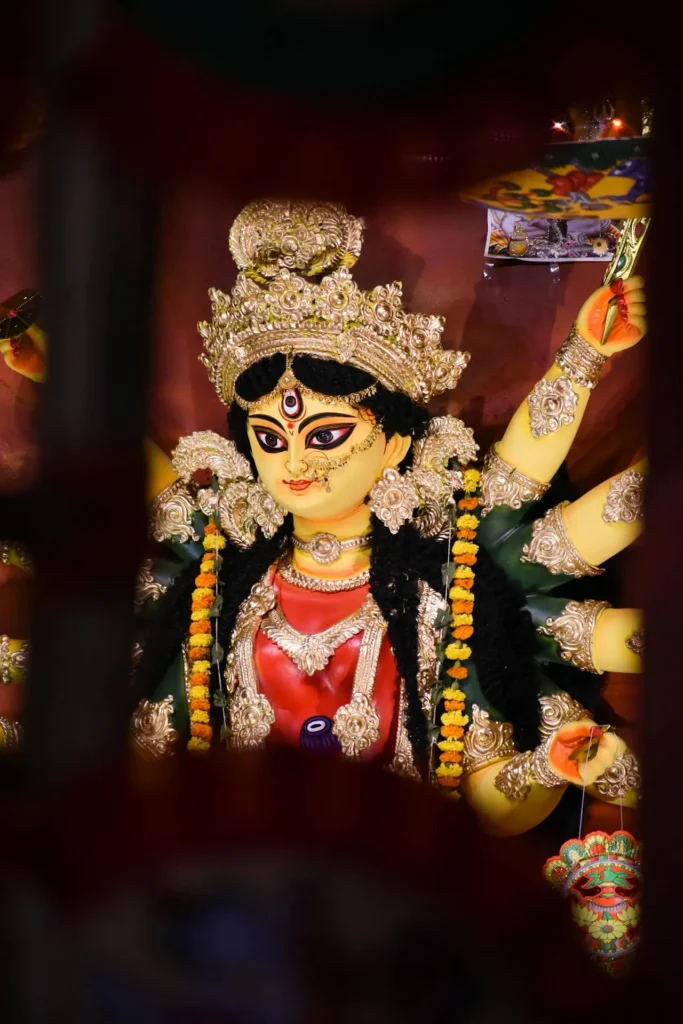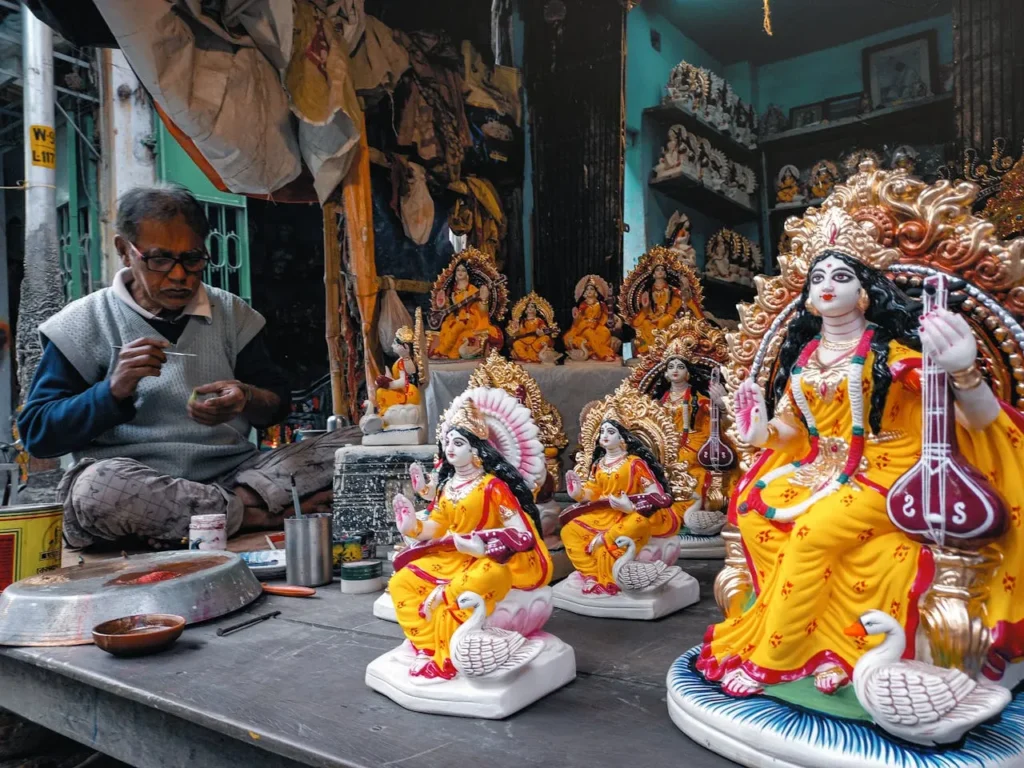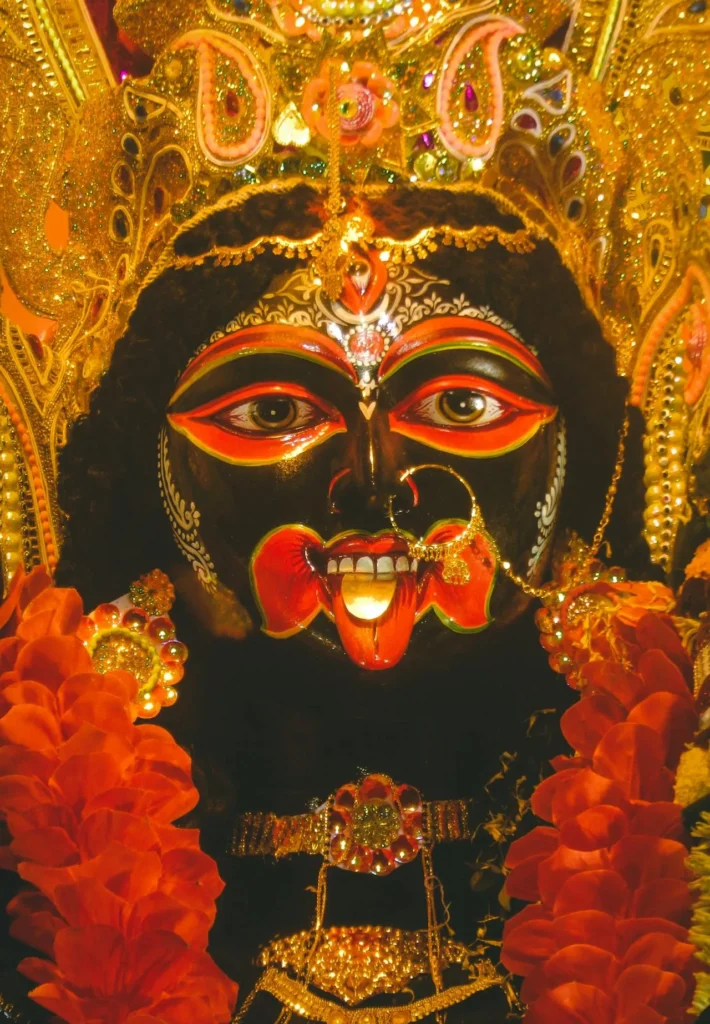Festivals are the ways of celebrating the culture, heritage and values of the people. Whatever festivals the people in a particular state celebrate tells a lot about their culture too. No matter how many festivals the people celebrate there is something really special about regional festivals. These regional festivals, as the name suggests, vary from region to region. Furthermore each state celebrates a few of their cultural festivals that are specifically meant for that state. Along with that there are also festivals that people all over the world celebrate. Moreover we can understand a lot about a particular state if we take note of their festivals. West Bengal as a state has quite a few festivals that it celebrates. These festivals of West Bengal are grand and celebrated with a lot of love.
Additionally some of the famous festivals of West Bengal today are not just concentrated within West Bengal. Some of these festivals of Bengal are festivals that the whole world knows about. And there is a popular saying in Bengal that says “Baro Mashe Tero Parbon”. This essentially means celebrating 13 festivals in a span of 12 months. And that is exactly what you will find in Bengal. So do you want to know what are the festivals of West Bengal? Keep on reading this article to know more about them. I am sure you will find this article helpful in knowing about the culture of West Bengal as well.
Festivals of West Bengal
Durga Puja

Nobody can discuss the West Bengal Festivals without mentioning the Durga Puja. There are always some festivals that are deeply related to the sentiments of a particular state. The people take the name of the state and the festival almost interchangeably. That is what Durga Puja means for West Bengal. For the people living here it is the festival where Goddess Durga comes to her maternal home along with her 5 children. She is the Uma who visits her own people once a year. And therefore the whole state celebrates her arrival in full grandeur and pomp.
The festival continues here majorly for 5 days starting from Sashthi, then Saptami, Ashtami, Nabami and Dashami. It happens during the same time of Navaratri but Durga Puja is very different from the Navratri celebration though. Here for 5 days there are pandals everywhere around the state. Every nook and corner looks beautiful with lights. Furthermore people of all ages hit the pandals to pay their visit to Maa Durga. With cultural programs, varieties of rituals and lots of food the festival is a grand affair. Some of the notable highlights are the Dhunuchi Naach, Sandhi Puja, Nabapatrika Snaan and of course the Boron on Bijoya Dashami.
On the last day of puja that is on the day of Bijoya Dashami the women put sindoor on each other as well as on the Goddess. This is called the Sindur Khela. By putting vermillion on the Goddess the people here bid adieu to their daughter so that she can come again next year. However at present even UNESCO has recognized Durga Puja here in the list of Intangible Cultural Heritage of Humanity. Now you can understand why out of all festivals in West Bengal this one is so special.
Jamai Sasthi
While it is super hot and sultry in the months of May-June, Bengal celebrates one of their most loved festivals. The festival is Jamai Sashthi. Basically this festival occurs on the Shukla Paksha of the Jaistha month from the Bengali calendar. Sashthi or the 6th day is an important day for the mothers of Bengal as they fast and do puja for their children. They pray to Maa Sasthi for the well being of their children. However it is even more special if a woman has a daughter who is married. Then the Jamai or the son in law gets all the limelight. Jamai Sashthi is the festival where the mother in law greets the son in law with a lot of love. The mother in law makes the Jamai wear a yellow thread for his wellbeing.
Moreover that was all about the rituals though. What follows later is a grand feast. After all, festivals are totally incomplete without food in Bengal. Out of all the festivals of West Bengal you will find the importance of food a lot of times. And this festival is no exception. With a palm leaf fan the mother in law fans the son in law as a part of the ritual. Later she serves him all sorts of summer fruits, sweets, and what not. Then it moves on to varieties of lentils, fried vegetables, varieties of fishes, mutton and the list goes on.
Even though this festival is essentially about a mother in law and a son in law it also describes how beautiful the family bond is. The warmth, love, hospitality as well as respect in the family is the key point. Additionally festivals like these are nothing but a way to bring the people of the family even closer.
Poush Sankranti
Among all the festivals of West Bengal this is one festival that is really close to the people. Annually on the occasion of Makar Sankranti the people of West Bengal celebrate the Poush Sankranti. Furthermore the Gangasagar Mela is one fair that happens during this time. It takes place at a location where River Ganga joins the Bay of Bengal. Devotees from all over the state and even outside visit Gangasagar to take a holy dip in the water. It is one of the largest gatherings of people as well. The Pous Mela also takes place at the same time. This is also the harvest festival so a lot of sweets are prepared too. There are varieties of goodness made using jaggery, milk, coconut etc like bhapa pitha, patishapta, dudh puli, payesh to name a few.
Read More: FESTIVALS OF KERALA | KERALA FESTIVALS NAME
Poila Boishakh
This is again one of the important festivals of West Bengal. Poila Boishakh is basically the 1st day of the Baishakh month according to the Bengali calendar. This is the New Year celebration for the Bengali community that happens in April every year. Moreover the other name of this festival is Nobo Borsho, which means New Year. This is however one of the auspicious festivals for Bengalis and hence they celebrate it by wearing new clothes on the day.
New financial year also marks its beginning from this day itself for traders and businessmen in Bengal. There is a ritual of Halkhata that the majority of shops and factories conduct to mark the new beginning. Also they worship Goddess Lakhshmi and Lord Ganesha together so that their businesses flourish. And none of the festivals in Bengal are ever complete without food. So people cook delicious Bengali spreads at home and enjoy the festivities. Some prefer to visit their friends and relatives as well a lot of cultural programmes, fairs and Pujas also take place on this auspicious day.
Saraswati Puja

As the name suggests this is a festival surrounding the worship of Devi Saraswati, the Goddess of knowledge and wisdom. On the auspicious day of Basant Panchami in the month of Magh the people in Bengal celebrate the Saraswati Puja. Moreover this festival in Bengal is more of a festival where students take more initiative. As it is believed that Goddess Saraswati is the Goddess of knowledge, the majority of households conduct the puja of the Goddess. Along with that educational institute like schools, colleges, universities and dance and music schools are more involved in this puja. Majorly girls prefer wearing sarees and boys wear Punjabi on the day of festival and offer Anjali.
Kali Puja

While the whole world celebrates Diwali, people in Bengal celebrate the Kali Puja. For the people living in Bengal Kali Puja is the festival of lights. There are pandals at every other street as well as the temples conduct puja of the fierce Goddess Kali. Mostly the Kali Puja takes place at night. People taking part in the puja, fasts for the whole day as well as night till the puja continues. And later the festival ends with lighting of diyas.
Lakshmi Puja
This is one of the popular festivals of West Bengal. People in Bengal worship Lakhsmi Devi the Goddess of wealth and prosperity around the month of October. This festival takes place a week after Durga Puja and is called Kojagari Lakshmi Puja that happens in Purnima. Moreover this is more of a household puja where the majority of houses do puja at their own home along with few pandals as well.
With a lot of passion and warmth the people here welcome the Goddess of Prosperity by drawing Alpona on the floor and performing other rituals. Along with that the women of the house read the Lakshmi Panchali as well. Later they offer bhog of Khichuri, Labda, Payesh, Luchi etc to the Goddess. And special delicacies like Coconut Ladoos known as Naru are the highlight of this festival.
Bhaiphota
Just like Raksha Bandhan or Bhai Dooj the people of Bengal indulge into the festival of Bhaiphota. It is one of the festivals of West Bengal that involves a brother and a sister. Here a sister prays for his brother’s long life by putting a teeka on his forehead. The sister uses sandalwood, honey, curd, ghee to make this teeka. Later the brother is fed with a lot of sweets and a grand feast as well. This is one of the festivals of West Bengal that reflects warmth and love. Furthermore it is nothing but a way of bringing the brothers and sisters closer to each other.
Read More: FESTIVALS OF ASSAM | ASSAM FESTIVALS
Wrapping Up!
And as I have said in the beginning of this article already, the people in Bengal celebrate 13 festivals in 12 months quite literally. Every now and then the people here get geared up and celebrate some festivals. These are some of the major festivals of Bengal that are very close to the people here. A mix of both social and religious festivals, it also reflects the culture of the people. Moreover the famous festivals of Bengal are just another way to bring people closer to each other. And I must agree the festivals are doing their job quite well too. So which of the festivals mentioned here are you familiar with? And if you are from Bengal then which one is your favorite amongst these? But if you are not from Bengal then let me know if you have attended any of the festivals already or you wish to.


